
Best Facial Recognition Cameras 2024
Consider a business that offers security solutions to different types of companies. The company’s top management chooses to buy cheaper facial recognition cameras for their clients in order to save money due to financial constraints. The management is certain that these cameras will continue to function well and bring them significant cost savings.
However, there could be a number of unfavorable effects from this choice. Firstly, the image resolution of the lower-quality cameras might be inferior which could lead to false positives or negatives. Besides, these cameras might struggle with low light performance, rendering them ineffective during nighttime or in dimly lit areas.
The lack of advanced security and privacy features in these cameras could put sensitive data at risk. Without proper encryption or access controls, the facial recognition data could be vulnerable to hacking or unauthorized access.
Although cutting back on facial recognition cameras could seem like a wise financial move, there may be more costs involved in the long run. In this blog, we will give an overview of the top camera types for facial recognition in 2024 and analyze the latest advancements in camera technology. This will help companies to achieve the effectiveness and reliability of their security solutions.
Key Features to Look for in a Facial Recognition Camera
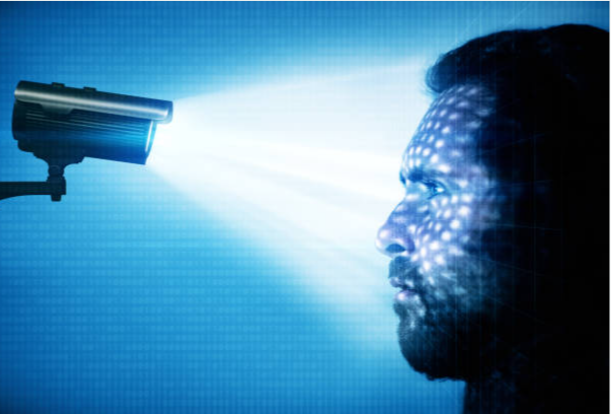
When selecting a facial recognition camera for your security needs, it is crucial to consider several key features that will ensure optimal performance and accuracy. Below is an outline of the essential aspects to look for in a facial recognition camera that will help you make an informed decision.
Resolution and image quality. For precise facial recognition, high-resolution cameras are necessary because they produce detailed images. For best results, look for cameras with a resolution of at least 1080p or greater.
Low light rerformance. Cameras must operate in low light in many security applications. Advanced low light capabilities, such infrared or night vision, are essential for preserving facial recognition accuracy in challenging lighting conditions.
Frame rate. A high frame rate ensures that the camera captures multiple images per second, allowing for smoother and more accurate facial recognition. To minimize motion blur, aim for a frame rate of at least 30 frames per second (fps).
Field of view. The field of view (FOV) determines the area that the camera can capture. More thorough coverage is made possible by a wider field of view, which is especially crucial when monitoring several access points or larger areas.
Integration with facial recognition software. Make sure the software you plan to use for facial recognition is compatible with the camera. While many cameras come with built-in facial recognition software, some might require additional software.
Security and privacy features. As facial recognition technology becomes more widely used, it is important to examine the security and privacy aspects of the camera. Look for cameras with encryption, safe access controls, and other security features.
By considering these key features, you can select the best camera for your facial recognition needs in 2024. Stay ahead of the curve with the latest advancements in camera technology and ensure accurate and reliable facial recognition in your security applications.
Types of Cameras Suitable for Facial Recognition
In the rapidly evolving world of facial recognition technology, choosing the right camera type is essential for ensuring accurate and reliable identification of individuals. Below is an overview of the various types of cameras suitable for facial recognition.
IP Cameras
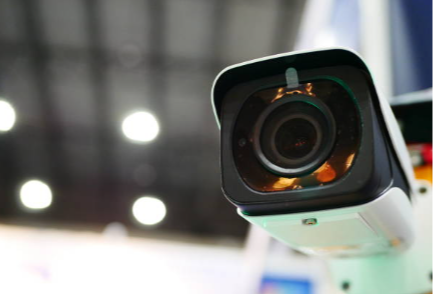
IP cameras transmit video footage over an Internet Protocol (IP) network. They are opposed to traditional analog cameras that use coaxial cables to transmit video signals. IP cameras convert captured video into digital data, which is then transmitted over an IP network. This digital format allows for higher image quality, scalability, and integration with other digital systems.
IP cameras are perfect for facial recognition applications because they have sophisticated features including motion detection, night vision, and broad dynamic range.
Dome Cameras
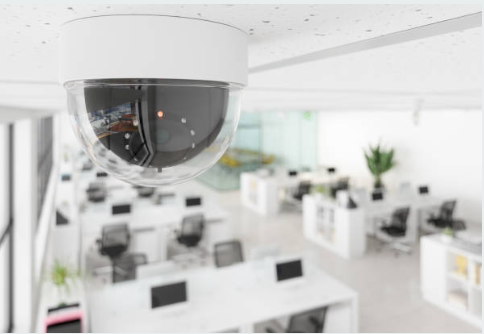
Designed for discreet surveillance, dome cameras are commonly used in both indoor and outdoor settings. Their compact size and unobtrusive design make them less noticeable to potential intruders, while their wide field of view allows for comprehensive facial recognition coverage.
Dome cameras are called so because of their distinct dome-shaped housing. The name is derived from the physical appearance of the camera, which resembles a dome or half-sphere. The dome shape allows for a wide field of view, enabling these cameras to capture a larger area with fewer devices.
Bullet Cameras
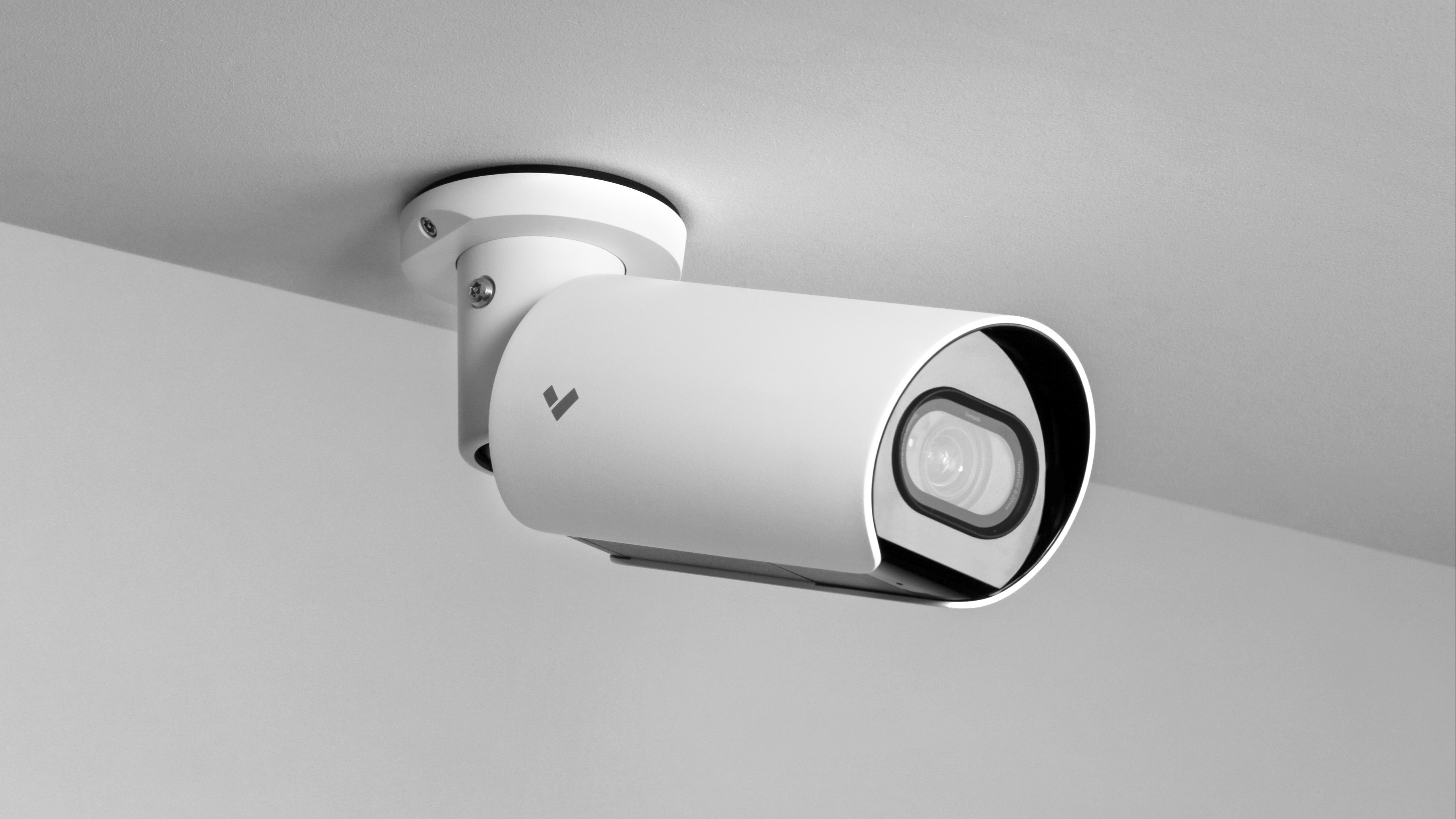
Named for their cylindrical shape, bullet cameras are typically mounted on walls or ceilings and are designed for long-range surveillance. These cameras often provide high-resolution images and can be equipped with infrared or night vision capabilities, making them suitable for facial recognition in various lighting conditions.
PTZ Cameras (Pan-Tilt-Zoom)
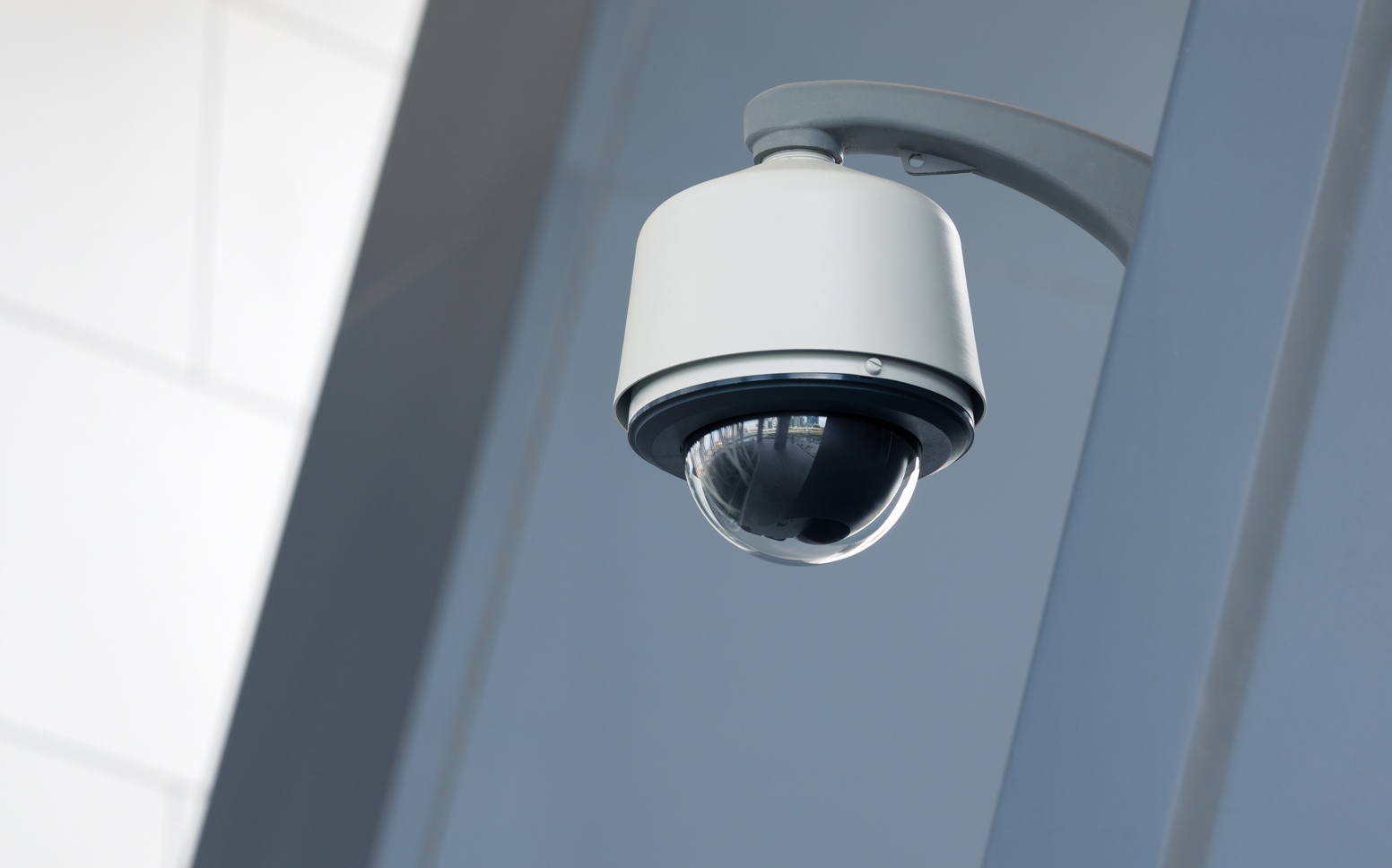
These cameras offer the flexibility to remotely control their movement, allowing security personnel to track and zoom in on individuals for detailed facial recognition. PTZ cameras can cover a large area and provide high-quality images, making them ideal for large facilities or expansive outdoor spaces.
PTZ cameras are called so because they have the ability to pan, tilt, and zoom, which are the three primary functions of these cameras. The pan function allows the camera to rotate horizontally on its axis, providing a wider field of view. The tilt function enables the camera to move vertically on its axis, allowing it to look up or down. The zoom function allows the camera to magnify a specific area of the image, providing a closer look at objects or individuals.
360-Degree Cameras
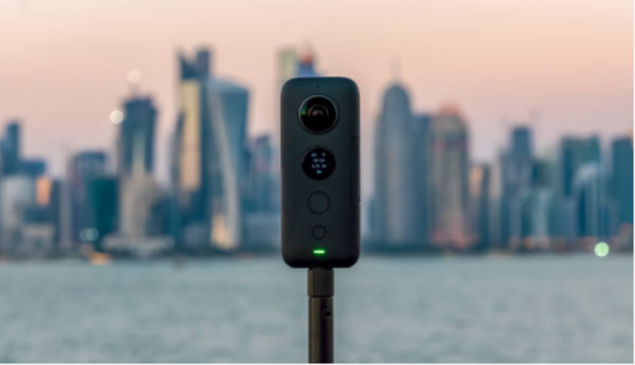
Also known as fisheye cameras, these devices capture a 360-degree view of their surroundings, providing comprehensive coverage for facial recognition purposes. 360-degree cameras can be mounted on ceilings or walls and are suitable for indoor environments with limited space.
Thermal Cameras
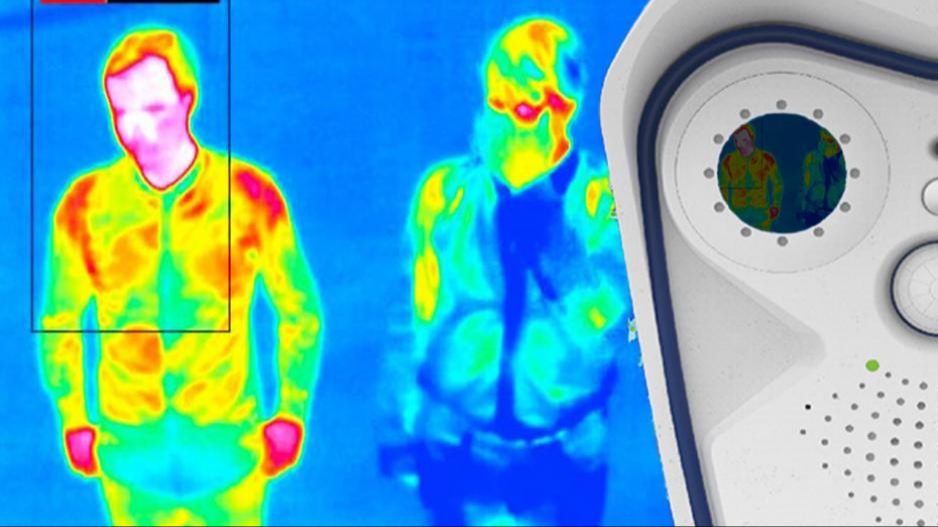
These cameras detect infrared radiation emitted by objects, including humans, and can be used for facial recognition in low-light or no-light conditions. Thermal cameras are particularly useful in outdoor settings or areas with limited visibility, such as parking lots or remote locations.
By understanding the unique capabilities and limitations of each camera type, you can make an informed decision when selecting a facial recognition camera for your security needs.
Best Camera Models for Facial Recognition
When selecting the best camera models for your facial recognition system, it is essential to consider factors such as resolution, low-light performance, frame rate, field of view, integration with facial recognition software, and security features. In this section, we will discuss some of the top camera models that excel in these areas and are suitable for various facial recognition applications in 2024.
IP Cameras
Axis Communications P1375-E
The Axis Communications P1375-E is a high-performance IP camera designed for outdoor surveillance applications. It features a 1/2" CMOS sensor, which delivers 5-megapixel resolution and supports up to 30 frames per second (fps) at full resolution. The camera also boasts a wide dynamic range (WDR) and Lightfinder technology for improved low-light performance.
Features:
5-megapixel resolution.
Up to 30 fps at full resolution.
Wide dynamic range (WDR).
Lightfinder technology for low-light performance.
IP66- and NEMA 4X-rated for outdoor use.
Power over Ethernet (PoE) support.
Strengths:
High-resolution imaging for facial recognition tasks.
Excellent low-light performance with Lightfinder technology.
Wide dynamic range for handling challenging lighting conditions.
Robust outdoor design with IP66 and NEMA 4X ratings.
Power over Ethernet support for easy installation.
Weaknesses:
Higher price point compared to some competitors.
No built-in PTZ functionality.
Hikvision DS-2CD2387G2-LU
The Hikvision DS-2CD2387G2-LU is a versatile IP camera with 4K (8-megapixel) resolution and a 2.8-12mm motorized varifocal lens. It offers advanced features such as smart detection, audio and alarm I/O, and support for H.265+ video compression.
Features:
4K (8-megapixel) resolution.
2.8-12mm motorized varifocal lens.
Smart detection for intrusion, line crossing, and region entrance/exit.
Audio and alarm I/O support.
H.265+ video compression.
IP67-rated for outdoor use.
Power over Ethernet support.
Strengths:
High-resolution imaging for facial recognition tasks.
Motorized varifocal lens for easy adjustment of the field of view.
Robust outdoor design with IP67 rating.
Power over Ethernet support for easy installation.
Weaknesses:
Some users may find the smart detection features to be overly sensitive.
No built-in PTZ functionality.
Dome Cameras
Sony SNC-EMX51R
The Sony SNC-EMX51R is a dome-style IP camera with a 1/2.8" Exmor R CMOS sensor, delivering 4K (8-megapixel) resolution at up to 30 fps. It features a 2.8-12mm motorized varifocal lens and offers advanced features such as intelligent scene capture, video analytics, and support for H.265 video compression.
Features:
4K (8-megapixel) resolution.
2.8-12mm motorized varifocal lens.
Intelligent scene capture for adaptive exposure and noise reduction.
Video analytics for object detection, line crossing, and intrusion.
H.265 video compression.
IP66- and IK10-rated for outdoor use.
Power over Ethernet support.
Strengths:
High-resolution imaging for facial recognition tasks.
Motorized varifocal lens for easy adjustment of the field of view.
Intelligent scene capture for improved image quality.
Video analytics capabilities for enhanced security.
Robust outdoor design with IP66 and IK10 ratings.
Weaknesses:
Higher price point compared to some competitors.
No built-in PTZ functionality.
Bosch FLEXIDOME IP starlight 8000i
The Bosch FLEXIDOME IP starlight 8000i is a high-performance dome-style IP camera with 4K (8-megapixel) resolution and a 2.8-12mm motorized varifocal lens. It features advanced features such as intelligent video analytics, audio and alarm I/O, and support for H.265 video compression.
Features:
4K (8-megapixel) resolution.
2.8-12mm motorized varifocal lens.
Intelligent video analytics for object detection, line crossing, and intrusion.
Audio and alarm I/O support.
H.265 video compression.
IP66-rated for outdoor use.
Power over Ethernet support.
Strengths:
High-resolution imaging for facial recognition tasks.
Motorized varifocal lens for easy adjustment of the field of view.
Intelligent video analytics capabilities for enhanced security.
Robust outdoor design with IP66 rating.
Weaknesses:
Some users may find the video analytics features to be overly sensitive.
No built-in PTZ functionality.
Bullet Cameras
Canon VB-H761LVE
The Canon VB-H761LVE is a high-performance bullet-style IP camera with a 1/1.9" CMOS sensor, delivering 4K (8-megapixel) resolution at up to 30 fps. It features a 2.8-12mm motorized varifocal lens and offers advanced features such as intelligent video analytics, audio and alarm I/O, and support for H.265 video compression.
Features:
4K (8-megapixel) resolution.
2.8-12mm motorized varifocal lens.
Intelligent video analytics for object detection, line crossing, and intrusion.
Audio and alarm I/O support.
H.265 video compression.
IP66- and IK10-rated for outdoor use.
Power over Ethernet support.
Strengths:
High-resolution imaging for facial recognition tasks.
Motorized varifocal lens for easy adjustment of the field of view.
Intelligent video analytics capabilities for enhanced security.
Robust outdoor design with IP66 and IK10 ratings.
Weaknesses:
Higher price point compared to some competitors.
No built-in PTZ functionality.
Honeywell Performance Series IP Bullet
The Honeywell Performance Series IP Bullet is a dome-style IP camera with a 1/2.8" CMOS sensor, delivering 4K (8-megapixel) resolution at up to 30 fps. It features a 2.8-12mm motorized varifocal lens and offers advanced features such as video analytics, audio and alarm I/O, and support for H.265 video compression.
Features:
4K (8-megapixel) resolution.
2.8-12mm motorized varifocal lens.
Video analytics for object detection, line crossing, and intrusion.
Audio and alarm I/O support.
H.265 video compression.
IP66-rated for outdoor use.
Power over Ethernet support.
Strengths:
High-resolution imaging for facial recognition tasks.
Motorized varifocal lens for easy adjustment of the field of view.
Video analytics capabilities for enhanced security.
Robust outdoor design with IP66 rating.
Weaknesses:
Some users may find the video analytics features to be overly sensitive.
No built-in PTZ functionality.

360-Degree Cameras
Vivotek FE9382-EHV
The Vivotek FE9382-EHV is a high-performance 360-degree camera with a 1/1.8" CMOS sensor, delivering 12-megapixel resolution at up to 30 fps. It features a 6.5mm fixed lens and offers advanced features such as intelligent video analytics, audio and alarm I/O, and support for H.265 video compression.
Features:
12-megapixel resolution.
6.5mm fixed lens.
Intelligent video analytics for object detection, line crossing, and intrusion.
Audio and alarm I/O support.
H.265 video compression.
IP66- and IK10-rated for outdoor use.
Power over Ethernet support.
Strengths:
High-resolution imaging for facial recognition tasks.
360-degree coverage for comprehensive surveillance.
Intelligent video analytics capabilities for enhanced security.
Robust outdoor design with IP66 and IK10 ratings.
Weaknesses:
No built-in PTZ functionality.
Higher price point compared to some competitors.
Panasonic WV-SF438
The Panasonic WV-SF438 is a high-performance 360-degree camera with a 1/1.8" CMOS sensor, delivering 12-megapixel resolution at up to 30 fps. It features a 2.8mm fixed lens and offers advanced features such as intelligent video analytics, audio and alarm I/O, and support for H.265 video compression.
Features:
12-megapixel resolution.
2.8mm fixed lens.
Intelligent video analytics for object detection, line crossing, and intrusion.
Audio and alarm I/O support.
H.265 video compression.
IP66-rated for outdoor use.
Power over Ethernet support.
Strengths:
High-resolution imaging for facial recognition tasks.
360-degree coverage for comprehensive surveillance.
Intelligent video analytics capabilities for enhanced security.
Robust outdoor design with IP66 rating.
Weaknesses:
No built-in PTZ functionality.
Higher price point compared to some competitors.
Thermal Cameras
FLIR A700
The FLIR A700 is a high-performance thermal camera with a 640x480 resolution, delivering thermal imaging at up to 30 fps. It features a 32mm fixed lens and offers advanced features such as digital image stabilization, onboard analytics, and support for H.264 video compression.
Features:
640x480 resolution.
32mm fixed lens.
Digital image stabilization.
Onboard analytics for object detection, line crossing, and intrusion.
H.264 video compression.
Power over Ethernet support.
Indoor and outdoor use.
Strengths:
High-resolution thermal imaging for accurate temperature measurement and object detection.
Digital image stabilization for smooth video in challenging conditions.
Onboard analytics for enhanced security.
Designed for both indoor and outdoor use.
Weaknesses:
No built-in optical camera for visual surveillance.
Higher price point compared to some competitors.
Hikvision DS-2TD2617B-6/PA
The Hikvision DS-2TD2617B-6/PA is a high-performance thermal camera with a 640x480 resolution, delivering thermal imaging at up to 30 fps. It features a 35mm fixed lens and offers advanced features such as intelligent video analytics, audio and alarm I/O, and support for H.265 video compression.
Features:
640x480 resolution.
35mm fixed lens.
Intelligent video analytics for object detection, line crossing, and intrusion.
Audio and alarm I/O support.
H.265 video compression.
Power over Ethernet support.
Indoor and outdoor use.
Strengths:
High-resolution thermal imaging for accurate temperature measurement and object detection.
Intelligent video analytics capabilities for enhanced security.
Audio and alarm I/O support for integration with other security systems.
Designed for both indoor and outdoor use.
Weaknesses:
No built-in optical camera for visual surveillance.
Higher price point compared to some competitors.
How to choose the right camera for facial recognition?
Choosing the right camera for facial recognition involves considering various factors based on specific situations and demands. Here are some essential aspects to consider in different scenarios.
Indoor vs. outdoor applications
For indoor applications, select a camera with a wide field of view (FOV) to cover larger areas, such as lobbies or hallways. A fixed lens may suffice, but a varifocal lens can help adjust the FOV as needed. Ensure that the camera has good low-light performance, as indoor lighting conditions can vary.
For outdoor applications, choose a camera with an IP66 or higher rating for dust and water resistance, as well as IK10 or higher ratings for impact resistance. A varifocal lens with a narrower FOV can provide higher detail for accurate facial recognition in outdoor settings. Look for cameras with built-in infrared (IR) illumination or high-sensitivity sensors to capture clear images in low light.
Facial recognition in public spaces
In public spaces, such as airports or train stations, facial recognition cameras should be discreet and unobtrusive. Select a camera with a small form factor and a wide FOV to cover large areas without being overly noticeable. Ensure that the camera has good low-light performance and can capture clear images from a distance.
For example, an airport may use facial recognition cameras at immigration checkpoints to verify travelers’ identities. In this case, a camera with a wide FOV and good low-light performance would be ideal for capturing clear images of travelers as they approach the checkpoint.
Facial recognition in access control systems
For access control systems, select a camera with a narrower FOV and high resolution to capture detailed facial images for accurate identification. Look for cameras with built-in IR illumination or high-sensitivity sensors to ensure reliable performance in low-light conditions, such as dimly lit hallways or stairwells.
For example, a corporate office building may use facial recognition cameras at entry points to grant access to authorized personnel. In this case, a camera with a narrower FOV and high resolution would be ideal for capturing clear facial images of employees as they approach the entrance.
By considering these factors and evaluating the available options, you can select the right camera for your facial recognition application.
Conclusion
Choosing the right camera for facial recognition in 2024 will be crucial for ensuring optimal performance and accuracy in various applications. Factors such as resolution, lens, lighting, frame rate, integration with facial recognition software, environmental considerations, and power options should be carefully considered when selecting a camera. Additionally, budget and vendor support should be taken into account to ensure a reliable and cost-effective solution.
By considering these factors and evaluating the available options, you can select the best type of camera for your facial recognition needs in 2024, ensuring optimal performance and accuracy in your specific situation and demands.
